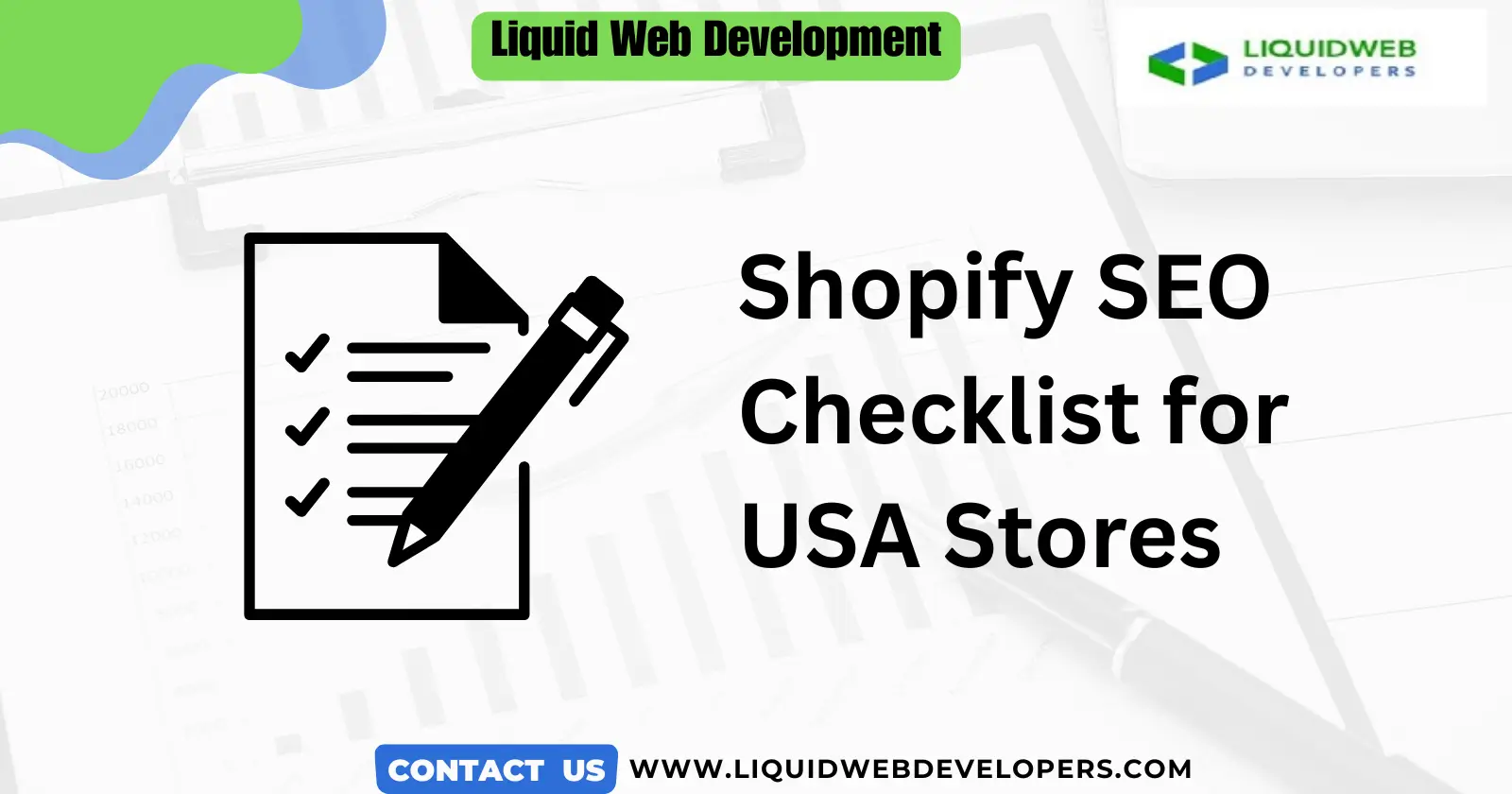Shopify SEO Checklist for USA Stores (2025 Edition)

Search engine traffic is one of the highest-converting channels for eCommerce, and if you’re running a Shopify store in the United States, ignoring SEO in 2025 means leaving money on the table. Shopify makes setting up a store easy, but ranking it on Google is a whole different game. That’s where this updated Shopify SEO checklist comes in.
In this guide, you’ll learn everything you need to improve your Shopify store’s visibility in US search results with steps that are actionable, proven, and aligned with Google’s latest guidelines.
Why You Need an SEO Strategy for Your Shopify Store
- Over 80% of shoppers research products on Google before buying.
- Ads are expensive, and most people skip them.
- Organic traffic brings long-term, trust-based customers.
- Local SEO (for the USA) can bring highly targeted, purchase-ready traffic.
If you’re serious about your business, SEO is not optional. It’s your store’s lifeline in 2025.
The Complete Shopify SEO Checklist for USA Stores (2025)
1. Set Up Google Tools
Before optimizing, make sure these are installed:
- Google Search Console — Tracks performance, errors, and indexing.
- Google Analytics 4 — Tracks user behavior & conversions
- Google Merchant Center (if you run Shopping Ads)
- Google Business Profile (if you’re a local USA business)
🛠 Tip: Submit your sitemap from Shopify to Search Console:
yourstore.com/sitemap.xml
2. Optimize Basic Site Structure
- Use clean URLs (avoid /collections/men-123456).
- Remove duplicate content (Shopify auto-generates some).
- Use a flat structure: Home > Category > Product
- Avoid unnecessary pages indexed by Google (like cart or filter URLs).
3. Do Keyword Research (USA-Based Intent)
Use tools like
- Google Keyword Planner
- Ahrefs (free version)
- KeywordTool.io
- Ubersuggest
Focus on:
- Long-tail keywords (e.g., “buy leather boots USA”)
- USA modifiers (“best Shopify store for [product] USA”)
- Local city-based keywords (if you’re location-targeting)
4. Optimize Title Tags & Meta Descriptions
For every product page, collection, and blog:
- Use your main keyword naturally.
- Keep titles under 60 characters.
- Keep meta descriptions under 155 characters.
- Include modifiers: “Buy,” “Online,” “USA,” “Free Shipping”
Example:
Title: Premium Handmade Candles—Free Shipping USA
Meta: Discover eco-friendly handmade candles. Fast shipping across the USA. Shop now.
5. Use Alt Tags for Images
- Every image should have a descriptive alt tag.
- Mention product type + location if possible.
e.g., alt=”organic soy candles handmade in USA”
This boosts image search rankings and helps accessibility.
6. Optimize Shopify Speed & Mobile UX
In 2025, Core Web Vitals are more important than ever:
- Use a fast, lightweight theme.
- Avoid app overload (each app adds load time).
- Compress all images (use tools like TinyPNG).
- Use lazy loading for images.
- Enable browser caching.
Use tools like Google PageSpeed Insights & GTmetrix to test performance.
7. Write High-Quality Blog Content
Blogging = long-term SEO growth.
Start posting content like
- How-to guides
- Product comparisons
- Industry news
- Gift guides
- USA market insights
Example Blog: “Top 5 Skincare Products for Dry Weather in USA (2025)”
Make sure to:
- Target long-tail, informational keywords.
- Internally link to relevant products.
- Use proper headings (H1 > H2 > H3).
- Optimize with the AIOSEO plugin.
8. Use Internal Linking Wisely
- Every blog post should link to 2–3 products or collections.
- Your homepage should link to top categories.
- The footer should include important pages (Contact, About, etc.).
- Use natural anchor text (avoid keyword stuffing).
9. Enable Schema Markup
Use the AIOSEO plugin to add:
- ✅ Product Schema
- ✅ FAQ Schema (for blog posts)
- ✅ Article Schema
- ✅ Review/Ratings (if applicable)
Google uses schema to enhance your listing in search results (rich snippets = more clicks). Click here for more info.
10. Target Local SEO (Optional but Powerful)
If you sell within a specific region (e.g., USA cities):
- Create a USA-focused About page.
- Add USA address in footer.
- Embed Google Map
- Create localized blog content.
- Use “near me” keywords (e.g., “Shopify store for sneakers near Boston”).
11. Build Backlinks (Off-Page SEO)
Try:
- Guest posting on niche blogs
- Submitting to business directories (US-based)
- Answering Shopify-related questions on Quora, Reddit, and StackOverflow
- Linking from Medium, Blogger, and LinkedIn Articles
- Partnering with influencers for link mentions
12. Track, Tweak, Repeat
SEO is not one-time.
- Check Search Console weekly.
- Watch for crawling/indexing errors.
- Track keywords using free SERP tracking tools.
- Update blog posts regularly (every 3–6 months).
Final Thoughts : Shopify SEO Checklist
Ranking your Shopify store in the US market isn’t about tricks; it’s about giving users (and Google) exactly what they’re looking for.
This 2025 SEO checklist is designed to help your Shopify store stand out, attract more organic traffic, and convert more buyers all without spending a dime on ads.
If you want help implementing this strategy or hiring an expert, contact Liquid Web Developers today. We’ve helped US businesses grow with real results.
